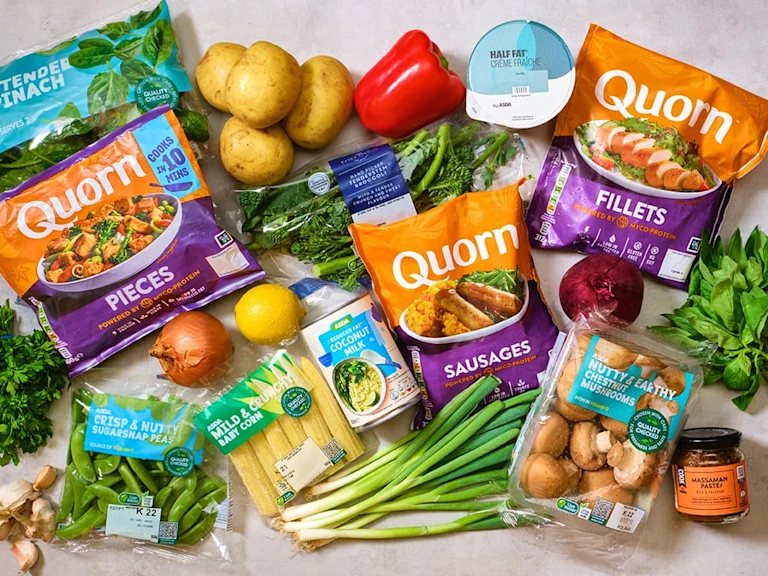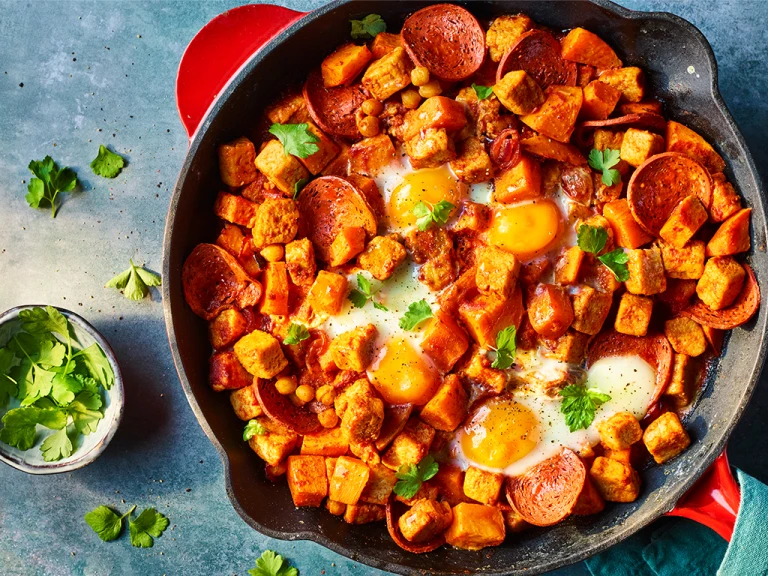
What's new

In today’s fast-paced world, making healthy choices can sometimes feel like an uphill battle. But what if we told you that one simple step towards a healthier lifestyle could be as easy as keeping an eye on your saturated fat intake?
In this blog, we’ll explore what saturated fat is, why a low saturated fat diet is a good choice and how Quorn vegan and vegetarian products can help you reduce the amount of saturated fat in your diet.
We’ll also share some of our favourite meat-free low-in-saturated fat recipes to help you get started.
So what is saturated fat, why is a low saturated fat diet a good choice, and how can including Quorn products into your mealtimes help you to reduce the amount of saturated fat in your diet? Read on for more.
What is saturated fat?
Before we dive into the benefits of reducing your saturated fat intake, let's understand what saturated fat is and why it matters.
We do need a certain amount of fat in our diets to stay healthy as fats provide energy in the form of calories, and they also help the body absorb fat-soluble vitamins like A, D, and E. That said, an excessive intake of fat can be detrimental to our health as fats are calorie-dense, which makes it easy day-to-day to consume more calories than we need, which can lead to weight gain.
Fats in our food can be either saturated or unsaturated. Saturated fat is primarily found in animal foods like meat and dairy products, but also in some plant based foods like coconut oil. Saturated fats are usually solid at room temperature and are prevalent in fatty cuts of meat, processed meats like bacon and sausages, cheese, butter, lard, ghee, and coconut oil, as well as foods made with them - cakes and biscuits for example. On the other hand, unsaturated fats are typically liquid at room temperature and can be found in olive oil, rapeseed oil, vegetable oils, oily fish, avocados, nuts, and seeds.
Why go low on saturated fat?
So why should we opt for a low in saturated fat diet? Saturated fats are known to raise blood cholesterol levels, specifically increasing levels of low-density lipoprotein (LDL) cholesterol, which is often referred to as 'bad' cholesterol. Increased LDL cholesterol is associated with a higher risk of heart disease and stroke, which is why dietary recommendations encourage a reduction in saturated fat intake. The big takeout here is that reducing your consumption of saturated fat contributes to the maintenance of normal blood cholesterol levels.
What we replace saturated fats within our diets is crucial. Substituting saturated fats with unsaturated fats has been shown to lower blood cholesterol levels, ultimately reducing the risk of heart disease.
For more detailed guidance on eating well to help manage blood cholesterol and promote heart health, take a look at the Ultimate Cholesterol Lowering Plan (UCLP©) and Protein Guide from HEART UK - the UK’s registered cholesterol charity.
How much saturated fat is too much?
In the UK, dietary guidelines recommend that the average male should eat no more than 30g of saturated fat a day and the average female no more than 20g of saturated fat a day. Often without knowing, many of us currently exceed these recommended limits.
How can food labels help when shopping?
When it comes to making healthier choices, food labels are your friend. They allow you to make informed decisions and compare products. By reading the nutritional information on food labels, or by using front-of-pack traffic light labelling, you can easily identify foods that are low (green), medium (amber), or high (red) in saturated fat:
For a product to claim it is 'low in saturated fat' on its packaging, it must contain less than 1.5g of saturated fat per 100g.
How could including Quorn in your diet help?
We offer a range of delicious and nutritious products that can help you reduce your saturated fat intake, without sacrificing on taste. Whether you're a vegan, vegetarian, flexitarian, or just looking to make healthier choices, there's a Quorn product for you.
Quorn mycoprotein is the key fungi-based ingredient used in all of our products. It’s high in protein and fibre, low in saturated fat and contains no cholesterol. Many of our products, including our Quorn Mince, Pieces, Fillets and Crispy Nuggets, are all low in saturated fat. You’ll see this on the traffic light labelling on the front of our packs, making it as easy as possible for you to choose healthier products which can easily be swapped into your favourite meals.
As saturated fat is commonly found in animal products, substituting meat with Quorn in your dishes can be an effortless way to reduce your saturated fat intake. If we compare Quorn Mince to beef mince for example, Quorn Mince contains just 0.5g per 100g, whilst beef mince contains 6.9g saturated fat per 100g.
Take a look at the table below and you’ll see the saturated fat content of selected Quorn products compared with their meat equivalents:
| Product | Saturated Fat (per 100g) |
|---|---|
| Quorn Mince (frozen) | 0.5g |
| Beef Mince (raw)* | 6.9g |
| Quorn Vegetarian Burgers (frozen) | 0.8g |
| Beef Burger (raw)* | 10.7g |
| Quorn Crispy Nuggets | 0.8g |
| Breaded Nuggets* | 3.3 |
* Source: McCance and Widdowson ‘The Composition of Foods’ Sixth Edition
Which Quorn recipes are low in saturated fat?
Now that you understand the benefits of consuming a low saturated fat diet, alongside how including Quorn products into your mealtimes can help towards lowering your saturated fat intake, here’s some delicious meal inspiration to get you started.

Our Vegetarian Chilli Con Carne with Quorn Mince has all the taste and kick of a classic chilli con carne, but with fewer calories and less saturated fat. Made with Quorn Vegetarian Mince, this delicious dinner can be on your plates in 30 minutes!

This easy Pad Thai with Quorn Pieces is great for lunch or dinner, for the whole family. Who doesn’t love a mid-week noodle dish! This super simple recipe is also perfect for a weekend fakeaway as a healthier option to a takeaway!

Dive into this Vegetarian Naked Burrito Bowl with Quorn Fillets - delicious served hot or cold. This recipe is super versatile too, you can use quinoa or rice – whatever you have in your cupboards. For a quick shortcut use store bought fajita mix instead of the homemade spice blend.

Why not serve up our Sticky Sweet & Sour Quorn Nuggets for a dish that’s bursting with flavour and sure to go down a treat. Serve up our crispy, golden nuggets with stir fried fresh vegetables and plain boiled rice for a speedy weeknight dinner.
By making simple changes to your meal planning, you can enjoy a healthier diet that is lower in saturated fat, without compromising on taste. Ready to get started? Try out the mouth-watering Quorn recipes we've shared above - your body and taste buds will thank you!

What's new

What's new


What's new

What's new
